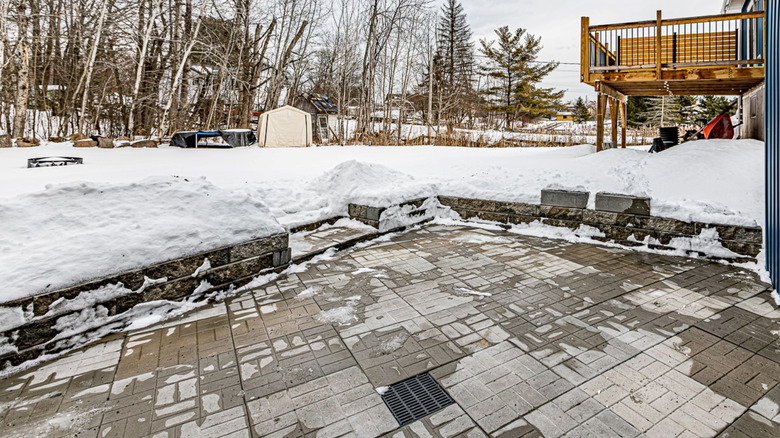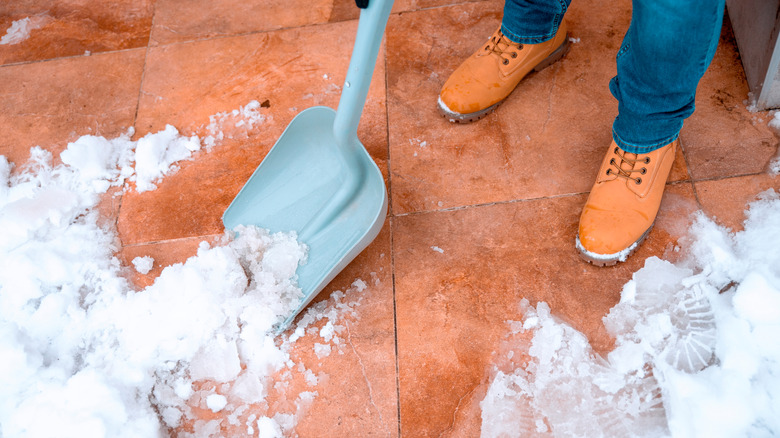The Best Types Of Ice Melt To Use On Patio Pavers Without Causing Damage
Unless you plan to turn your patio into a backyard ice skating rink, dealing with ice and snow on the patio is a regular part of winter maintenance. Ice melt may seem like the obvious choice as it's readily available at stores, but not all ice melt products are created equally. They use different ingredients to lower the freezing point of water, which interferes with ice forming in colder temperatures. Some of those chemicals are hard on patio surfaces, even durable paver stones. To keep your patio looking great for longer, look for ice melt products that use calcium chloride as the melting agent.
Calcium chloride ice melt can prevent ice from forming on pavers, but it can also start melting snow and ice that's already on them almost immediately. Plus, it's effective in temperatures as low as -25 degrees Fahrenheit, so it works in many different climates. Another option that's generally safe for pavers is magnesium chloride.
One type of ice melt you should avoid is sodium chloride, commonly called rock salt. You might be tempted by the low price and the ease of finding it, but sodium chloride is corrosive and could deteriorate your pavers. The moisture from rock salt can damage pavers from within by soaking into the concrete and refreezing. Avoiding rock salt also protects your garden from deadly winter salt damage. Calcium chloride is a safer option for plants that are close to your patio, although it can still cause damage if you use too much.
Keeping your patio free of snow and ice
Even though calcium chloride is safer for pavers, it's still necessary to apply it with caution. Too much at once can be bad for the pavers and surrounding vegetation. When you know snow is on the way, sprinkle just a light layer of the ice melt over your patio to help prevent buildup. If the snow keeps falling, you can apply another light layer of the calcium chloride ice melt.
Once the weather warms up enough, use a little warm water to wash away salt remnants. Until then, sweeping your patio removes some of the dried salt (and sand if you use it to add traction). Keeping the pavers as clean as possible during the winter months helps protect them and make them last longer.
As an alternative to ice melt, shovel your patio regularly when it snows to keep ice from forming. Plastic or rubber shovel heads are ideal to prevent damage to the pavers. You could crack pavers if you use metal shovels. When you properly seal your backyard patio pavers, you can cut down on natural cracking and keep water from seeping in and expanding as it freezes. Finally, if traction is your main motivation for using salt, try anti-slip mats or sand instead. Mats may be easier to clean off and give you traction without salt. Sand doesn't melt the snow and ice, but it can cut down on how slippery the patio is.

